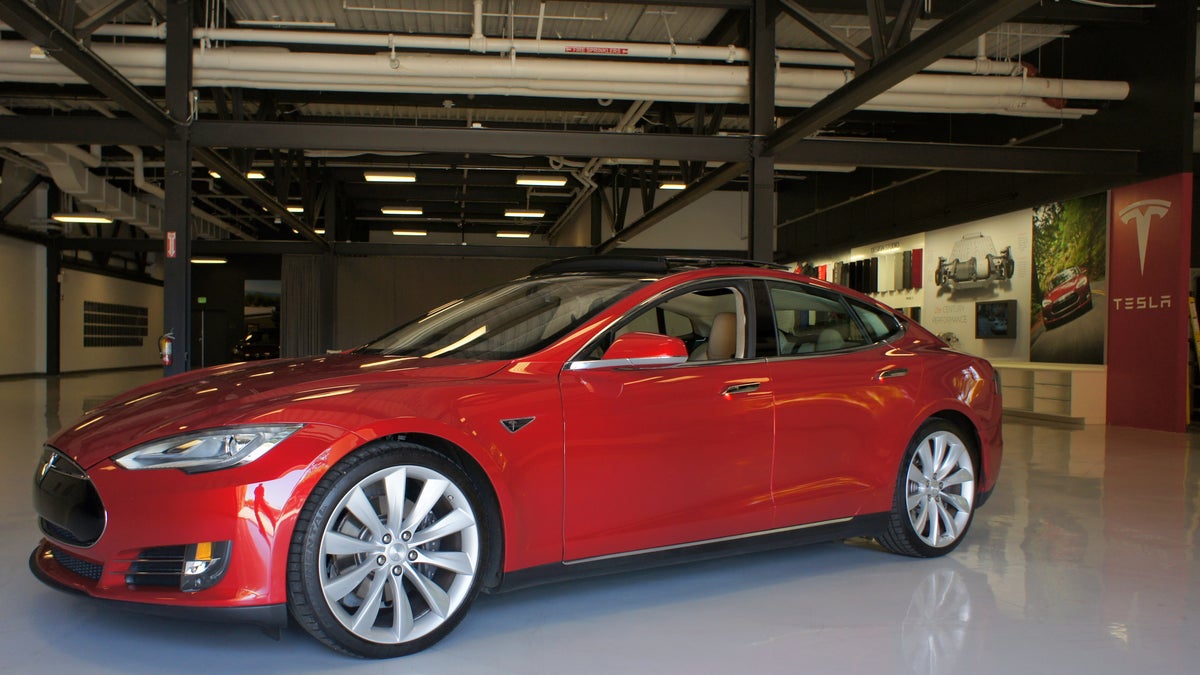Tesla's path to the upgradable car
At a press event on Tuesday, Tesla shared how it took advantage of Nvidia GPU technology to make a car ready for continual upgrades.

At Tesla's sunny headquarters in Palo Alto, Calif., I asked CTO JB Straubel when to expect the next model upgrade for the Model S. He quickly dismissed the automaker cliche of updates based on model years, saying that Tesla would release new features for the Model S as his team finished creating them.
One of the Model S' great strengths, beyond its zero emissions, minimal running costs, excellent driving character, and luxury appointments, is that Tesla can deliver over-the-air updates to its cabin electronics.
And those updates can be very extensive, as the Model S features few hard controls. Its instrument cluster is entirely digital and almost all cabin controls live on the 17-inch touch screen dominating the center stack. Behind the scenes, two Nvidia Visual Computing Modules, hosting Tegra 3 chips, perform all the processing for navigation, media, a hands-free phone system, and an instrument cluster display.
New trip planner
As one example, Straubel said Tesla would soon be releasing a new feature, a trip planner, to help drivers manage the Model S' electricity consumption. This feature goes beyond simple navigation to look at different routes and estimate their energy consumption, based on factors such as hills. It will show drivers how much juice they have left once they reach their destinations, and most likely suggest charging stations along the route.
Straubel noted that Tesla had released between 6 and 10 updates since the Model S' launch, but that the pace is slowing as initial feature requests from owners have been met. He projects updates every two or three months going forward.
One area on which Tesla is working, which will be less transparent to owners, is how the Model S sleeps. Part of the seamless experience of the Model S is that it is ready to go as soon as you get in, with all displays lighting up right away. To make that behavior possible, Tesla puts the processors into a sleep mode that draws enough power to make them quickly awake. But in an electric car, any power draw must be minimized, especially when the car is not in use. Tesla is still working on perfecting the balance between making the car instantly ready and consuming little electricity when parked.
Click through for more details of Tesla's cabin techHowever, as much as Tesla can tweak its software, Straubel says that the car's drive systems are safe. The two Nvidia Visual Computing Modules are firewalled from the power control and drive systems. Straubel mentioned a moment in a development car when both the instrument cluster and center display went through a reboot, which had no effect on the driving performance.
Planning autonomous
A good portion of our conversation centered around a tech area missing from the Model S, driver assistance systems. Features such as adaptive cruise control and lane-keeping assistance are common in luxury competitors, but not available on the Model S.
As these features rely on cameras and radar, a software upgrade just isn't going to cut it.
Although Tesla has not yet determined a strategy for implementing these systems, or what form they would take, Straubel said the preferred approach would be similar to how the company handled the Model S dashboard electronics. Instead of implementing features in a piecemeal manner, Tesla would like to equip future cars with a complete sensor array capable of giving the car enough data for autonomous driving.
However, instead of making the cars fully autonomous from launch, Tesla could enable different driver assistance features through its over-the-air updates. The trick is building as much hardware capability into the cars as technology permits, and then software can be developed and implemented as required.
This thinking is what really sets Tesla apart from its automaker peers, and highlights the problems competitors have faced when trying to implement modern electronics in their cars. With cars developed in three- to five-year product cycles, there is no possibility that the electronics can be as up-to-date as the latest smartphones, tablets, and other personal devices.
Tesla may be an upstart, but it has valuable lessons for its older competitors.

